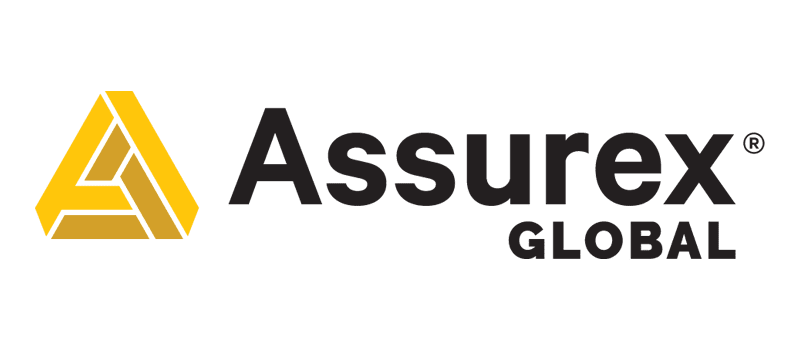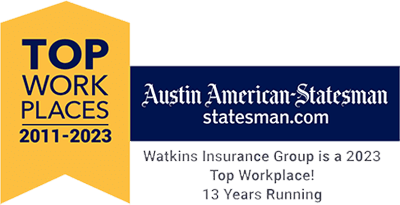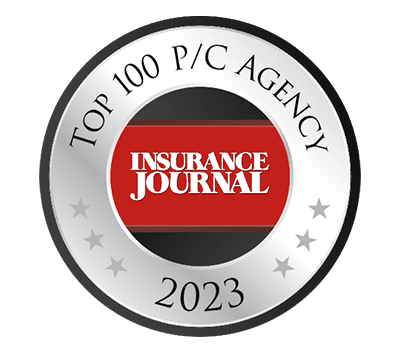The best way to reduce illnesses, injuries, and associated costs is to build a comprehensive safety culture. But creating such a culture is not an overnight process. Instead, it is a multi-year, top management commitment that results in an organization with low accident rates, low turnover, low absenteeism, and high productivity. This is a big-picture, long-term project. Watkins Insurance Group has a full set of tools for your business to build a safe workplace. Contact us today (512) 452-8877 and let us help you create a safe and productive workplace.
A robust safety culture has the following characteristics:
- The commitment to safety at the highest organizational level is clear. This translates into values, beliefs, and behavioral norms that apply across all areas of an organization’s operations. At higher levels in a company, you will find people who care deeply about their work being safe, which leads them to make decisions with regard to how things should be done because they know what kind of harm could come if something goes wrong.
- The safety culture in an organization is promoted and reinforced by the compensation system. Employees’ base salaries are tied to their commitment, assessed through regular performance reviews that measure how well they’ve upheld this valued trait for themselves as well as others on staff.
- Important health and safety standards should take precedence over production. Employees who err on the side of caution will be rewarded, even if a later review suggests otherwise.
- Communication about safety is a top priority for all levels of the organization. Safety issues are reported openly and honestly without anyone feeling persecuted so that everyone can learn from mistakes to make them less likely in future endeavors.
- Unsafe acts—the main cause of accidents—are rare.
- The company’s safety initiatives are a direct result of employee feedback. Employees continuously learn and identify opportunities for process improvements that will decrease the likelihood of an accident, which is why it pays off to invest in training programs designed with this goal specifically in mind.
The following sections explore some of the key components of a successful safety culture in more detail.
Why Benchmarking is Important for a Safe Workplace
Measuring the quality of your safety culture can be difficult. You not only have to guess but also rely on what you think is best for assessing it in some way, which might lead to less than perfect results because everyone’s perspective will differ slightly from another person’s point-of-view or even just days apart within themselves when they’re thinking back over time periods where there has been progress made toward improving upon anything targeted by management as an area needing improvement.
A better idea would involve both analytical tracking systems and periodic subjective surveys conducted at regular intervals, so we always know how much progress matters overall rather than focusing solely on the most recent changes.
This will help ensure that everyone is always on the same page, no one falls too far behind or gets too far ahead, and there’s a general consensus about what needs to be improved next so we can work together more efficiently towards common goals.
It’s essential to establish some sort of baseline before starting to make changes in your safety culture. This will allow you to gauge the effectiveness of any new policies or procedures put into place. Additionally, it will help you to identify any potential areas for improvement.
There are a few different ways that you can go about measuring your safety culture. One option is to use a safety climate survey. This type of survey can be administered to employees regularly to gauge their perceptions of the safety climate within the organization.
Another option is to use a safety culture benchmarking tool. This tool can help you compare your organization’s safety culture against that of other organizations in your industry. This is an important step because it can help you to identify any areas in which you may be falling behind your peers.
It’s also important to keep in mind that safety culture is always evolving. As such, it’s important to measure it regularly to ensure that you are keeping up with the latest trends. Additionally, measuring safety culture can help you to identify any potential areas for improvement.
Hiring to Avoid Workplace Injuries
Due to preexisting medical conditions or limitations, some potential job candidates may be more prone to workplace injury.
The Americans With Disabilities Act (ADA) does not prevent you from asking any medical questions during the hiring process. There are actually three stages of employment: pre-employment, post-offer (after a conditional job offer), and finally, placement into an actual position with company policy compliance throughout each phase to ensure fair treatment for all parties involved.
During the first and third stages, it is true that you cannot ask any medical questions. However, during the second phase (after a conditional offer of employment is extended), you can ask the applicant to fill out a medical questionnaire and/or take a medical exam. If the applicant is unfit for the job in medical opinion, you can withdraw the offer. To avoid hiring your next workers’ compensation claim, there are two key processes you need to implement.
The Conditional Offer of Employment
The ADA says that employers cannot require a job applicant to provide medical information or undergo a medical exam until a conditional offer of employment is made. When a conditional offer is made, you are essentially hiring the candidate. The only way an offer may be withdrawn prior to the effective date of employment is if, in medical opinion, the candidate will be unable to perform the job duties safely with reasonable accommodations.
The Medical Questionnaire/Exam
After you extend a conditional offer of employment, it is time to perform medical screening of the candidate. If information emerges from the screening that indicates that the candidate will not be able to perform the job duties safely even with reasonable accommodations, then and only then can you withdraw the offer of employment.
Stay Out of Trouble with OSHA
In order to be prepared for OSHA’s arrival at your workplace, you should make sure that the business is in compliance. This helps avoid fines and ensures safe work practices are encouraged and practiced within a company setting as well.
Postings
If you have employees, it’s important to know the notices and rules that OSHA requires employers to post in their workplace. There are different requirements for each poster or notice depending on what industry your business operates within, so make sure they display these signs and follow all guidelines carefully.
Recordkeeping
OSHA also requires certain employers to track workplace injuries and illnesses and report them periodically.
HAZCOM
OSHA’s Hazard Communication Standard states that employees must be made aware of all chemicals used in their workplace, their hazards, and instruction for safe handling. This is accomplished with labels, safety data sheets (SDS), and employee information and training.
In addition to the three key areas of frequent OSHA violations, there is an easy way for you to identify the top violations in your specific industry. OSHA provides a searchable database of the most frequent OSHA violations by company size and Standard Industrial Classification (SIC) code.
Promoting the Health of Your Workers
It’s very important to be aware of your company’s costs due to employees’ health issues. You bear many direct expenses like medical claims and indirect ones such as absenteeism and lower productivity levels because they can’t work efficiently anymore- which means you spend money on staff replacement or training for new members who will take their place in this hierarchy (or ergonomy).
Research has shown that you can avoid or reduce many of these costs by providing early behavioral and/or clinical interventions for employees. Clinical preventive services include screenings (including physicals), immunizations as well follow-up care; while there are also plenty of less formal ways to help your staff members stay healthy such as smoking cessation programs, weight management strategies, etc., which will be more effective in the long term if they’re started during an ongoing basis rather than waiting until something goes wrong first.
The benefits of improving employees’ health goes far beyond what it does for them in their personal lives. For one, a healthier workforce means lower premiums costs for businesses because they are less likely to die from preventable diseases or accidents on the job. Secondly, since happy staff members make happy clients.
Increased productivity
Health is not just a privilege; it’s an investment!
The physical and mental well-being of your employees is critical to their productivity. Studies show that healthy workers produce more than unhealthy counterparts, so what’s good for the body should be equally important in building company culture – don’t you agree?
Reduced health care costs
Employees with poor health use more health care resources and generate more claim costs than their healthy peers.
Implementing a wellness program is not as difficult or overwhelming if you focus your efforts on areas where employees already have an interest. This will lead to more significant results for them and the company.
Austin’s Leader in Insurance and Risk Management
As one of the largest independently-owned fastest growing agencies in Texas, Watkins Insurance Group is able to provide its clients with innovative services to meet their insurance and risk management needs.
We are committed to providing unparalleled customer service and making sure that each client is satisfied with their experience. Our headquarters are based in Austin, but we have locations all across central Texas, so no matter what part of the state you live in or how far away from us your business may be, we can provide solutions for every need.







